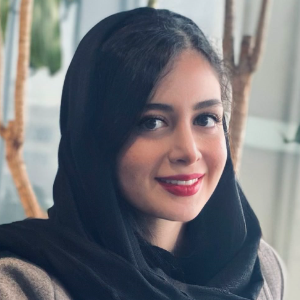Title : Advancements in Mesenchymal Stem Cell (MSC) based therapies for diabetic ulcers: Focus on placenta-derived MSCs and acellular amniotic membrane
Abstract:
Diabetic foot ulcers are prevalent and long-term complications of diabetes mellitus with significant health care influences and costs. These mentionable instances of chronic wounds can be accompanied by other severe complications, including limb amputation and gangrene, infections, and even death in some severe cases. Financial, emotional, and cosmetic issues are also remarkable challenges following these chronic ulcers. All these complications can remarkably impact the quality of life of individuals. Thus, more attention should be paid to the discovery of novel treatments. Mesenchymal stem cells (MSCs) have been introduced as satisfactory therapeutic tools in recent years in the personalized medicine era. MSCs could be obtained from various sources regarding numerous researches. Herein, Placenta MSCs (PMSCs) as the rich MSCs sources have attracted great concern due to their advantages compared to others, such as their better accessibility and expansion and decreased immunogenic impacts. In this regard, the effectiveness of PMSC- based therapies in the treatment of different disorders and particularly for wound management has been established so far. On the other hand, the amniotic membrane (AM) itself can provide a graft with regenerative, immune regulatory, and healing functions with limited ethical concerns. Indeed, acellularized AM can offer an accessible natural scaffold that has become more popular in regenerative medicine. It provides a swelling and moisture-retention environment and contains different bioactive molecules, growth factors, and elastic properties (without the associated complications of synthetic scaffolds) for ideal wound healing. Many studies indicated that acellular AM loaded with MSC can even promote the regeneration process and acts as an efficient wound dressing. However, there is a requirement for more research works that focus on the influences of the PMSCs in a company with AM (as a scaffold) to be utilized as a wound dressing for diabetic ulcers. In this approach PMSCs should be manufactured after obtaining to be seeded on the prepared acellularized AM. Eventually, the topical use of the provided scaffold must be evaluated. Altogether, we have concluded from the results of many studies that PMSCs+AM graft can be considered a novel wound dressing that should be assessed more in further studies to cure diabetic wounds.
Audience Take Away:
- Clinical Applications: Healthcare professionals, including physicians and wound care specialists, can utilize the information to enhance their understanding of the potential benefits of mesenchymal stem cells (MSCs) and acellular amniotic membrane (AM) in the treatment of diabetic foot ulcers. This knowledge can guide their clinical decision-making and treatment strategies, leading to improved patient outcomes.
- Teaching and Education: The research outcomes can be incorporated into educational curricula and courses related to tissue engineering, regenerative medicine, and wound care. Faculty members can utilize the information to provide students with up-to-date knowledge, encourage critical thinking, and inspire research projects in the field.
- Research Expansion: Faculty and researchers in the field of tissue engineering and regenerative medicine can use the research presented as a foundation for expanding their own investigations. They can build upon the findings related to placenta-derived MSCs (PMSCs) and acellular AM, exploring further aspects of their application in wound management and tissue regeneration.
- Practical Wound Management Solutions: The combined use of PMSCs and acellular AM as a wound dressing for diabetic ulcers offers a practical solution to a complex problem. This approach has the potential to simplify and streamline wound care protocols, providing a more efficient and effective method for treating diabetic foot ulcers.
- Enhanced Design and Accuracy: For researchers or designers working on developing wound dressings or regenerative scaffolds, the information presented can provide valuable insights into the properties and advantages of acellular AM as a natural scaffold. This knowledge can aid in designing more accurate and effective products for wound healing, leading to improved outcomes for patients.



